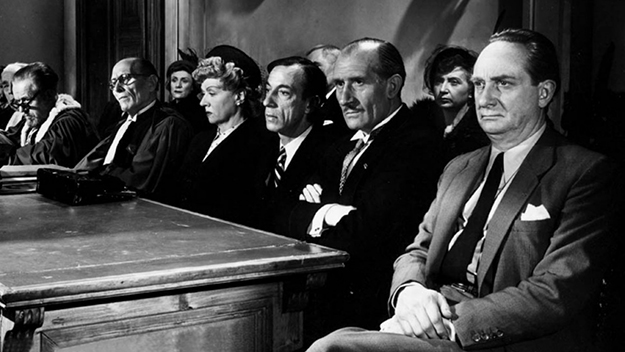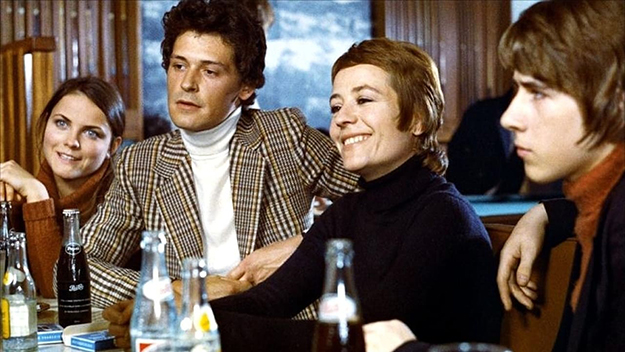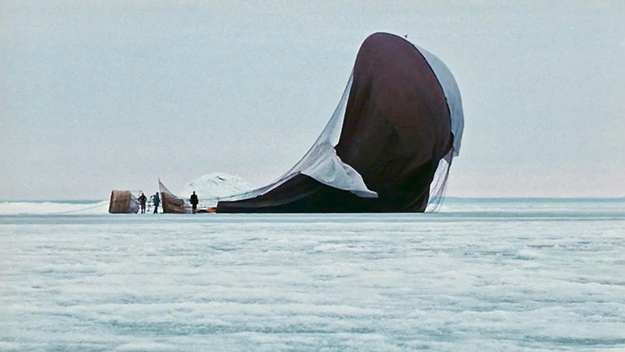Dispatch: Lumière 2019

Justice is Done (André Cayatte, 1950)
“The things you get fired for when you’re young are the same things that you get the lifetime achievement award for later on,” Francis Ford Coppola pointed out to the audience of Lyon’s Lumière Film Festival, where he was the guest of honor this year and given a retrospective alongside a motley crew of honorees comprised of Lina Wertmüller, Donald Sutherland, Marina Vlady, Marco Bellocchio, Daniel Auteuil, Frances McDormand, Bong Joon-ho, and Gael García Bernal. Rejecting the conventional “master class” setup, Coppola insisted that he remains a student of cinema and was eager to put his experience to the service of aspiring filmmakers whose questions punctuated the hour-and-a-half-long conversation moderated by festival heads Thierry Frémaux and Bertrand Tavernier.
Whereas Coppola stood for innovation and daring, a retrospective dedicated to André Cayatte (1909-1989) brought a more traditional, conservative perspective to the 11th edition’s lineup. Spotlighted as part of Tavernier’s mission to promote overlooked French directors, Cayatte holds a reputation for being loathed by Cahiers du cinéma’s Young Turks, who slammed his fixation on social issues and didactic approach. (François Truffaut, his leading detractor, famously stated that “each André Cayatte movie is worse than the previous one.”) A former lawyer and novelist, Cayatte began his filmmaking career during World War II at the Nazi-run Parisian production company Continental, where he co-wrote and directed a series of period adaptations. After being temporarily blacklisted for working with the Germans, he dramatized his observations about law in a tetralogy whose first installment, Justice is Done (1950), received the Golden Lion in Venice.
Featuring a tragic cameo from L’Atalante’s Dita Parlo, Justice is Done follows a group of ordinary citizens selected for jury duty on a case of euthanasia. While the panoply of characters reflect the divisions of postwar French society, some of them flirt with caricature to the point of coarseness and undermine the gravitas of the trial scenes. The humanity of Claude Nollier’s performance as the defendant—a pharmacist torn between caring for her terminally ill partner and giving in to her growing infatuation with another man—shines through, but the film’s contrived, sensationalistic conclusion makes it a story of victimization rather than empowerment.

To Die of Love (1971)
If Justice is Done nonetheless contains a few memorable moments, Cayatte’s best-known movie, To Die of Love (1971), is crippled by predictable and uninspired storytelling. Based on the Gabrielle Russier case—a scandal that shook France in the wake of May ’68—To Die of Love stars Annie Girardot as a high school teacher whose romantic involvement with one of her students leads her down a suicidal path of oppression and imprisonment. Although the protagonists’ risk-taking and rebelliousness resonate with the era’s spirit, their intimacy is treated with an old-fashioned reticence that betrays Cayatte’s inability to keep in step with the subversive aesthetics of post-1968 French cinema.
Shown in a gorgeous new restoration at the festival’s “Treasures and Curiosities” section, Bo Widerberg’s Academy Award–nominated All Things Fair (1995) accomplishes wonders with the same subject matter. Set in Sweden against the backdrop of the Second World War, All Things Fair centers on the coming-of-age of 15-year-old Stig (the director’s son, Johan), who embarks on an affair with his ethereal, unhappily married thirtysomething schoolteacher, Viola (Marika Lagercrantz). Using Handel’s aria “Lascia chi’o pianga” as a leitmotif, Widerberg delineates Stig’s budding desire for Viola in subtly erotic scenes in which he gazes at her from outside the window or presses his lips against her empty classroom seat. After pulling Viola into an impromptu embrace on the school’s staircase, Stig initiates their lovemaking by showing up at her apartment later that day. Unfolding behind closed doors, the pair’s lustful relationship transcends their age difference, but gradually falls apart when Stig develops an unexpected affection for Frank (Tomas von Brömssen), Viola’s alcoholic husband who drinks his melancholy away to the sound of Tchaikovsky’s and Mahler’s tunes. Sparking Viola’s jealousy, Stig’s friendship with Frank yields some of the film’s most poignant moments, including one in which the broken man tearfully confesses his bafflement in the face of history as Göring’s thunderous voice rises over the stirring classical music on the radio.

The Flight of the Eagle (Jan Troell, 1982)
This interplay between the intimate and the epic also characterizes Jan Troell’s The Flight of the Eagle (1982), another lush and harrowing Oscar-nominated Swedish movie that screened in the same program as All Things Fair. Led by a masterful performance from Max von Sydow, The Flight of the Eagle depicts Salomon August Andrée’s fatal 1897 balloon expedition to the North Pole in the company of his devoted young assistants, Nils Strindberg (Göran Stangertz) and Knut Frænkel (Sverre Anker Ousdal). Opening with photographs of the explorers’ ragged remains recovered decades later, The Flight of the Eagle is less concerned with building suspense over the mission’s outcome than with dissecting Andrée’s hubris and obsession. Synchronized with an experimental score that emulates the rhythm of a machine, the film’s first half is propelled by the adrenaline of the trip’s preparation, while its second is suspended in the Arctic landscape’s dreamlike stillness. As the three men step out of their wrecked balloon and venture into the wilderness, the narrative takes a gently introspective turn, fluctuating between the physical hardships of survival and idyllic visions of a future that will never happen.
Featured in a retrospective that brought part of Warner’s “Forbidden Hollywood Collection” onto the big screen, pre–Hays Code comedies provided an irreverent contrast to the “Treasures and Curiosities” selections. Whether Joan Blondell in Roy Del Ruth’s Blonde Crazy (1931), Kay Francis in William Dieterle’s Jewel Robbery (1932), or Jean Harlow in Jack Conway’s Red-Headed Woman (1932), Depression-era actresses dazzled audiences with their mixture of vulnerability and sassy wit, emerging as the festival’s true heroines.
Yonca Talu is a filmmaker living in Paris. She grew up in Istanbul and graduated from NYU Tisch.







